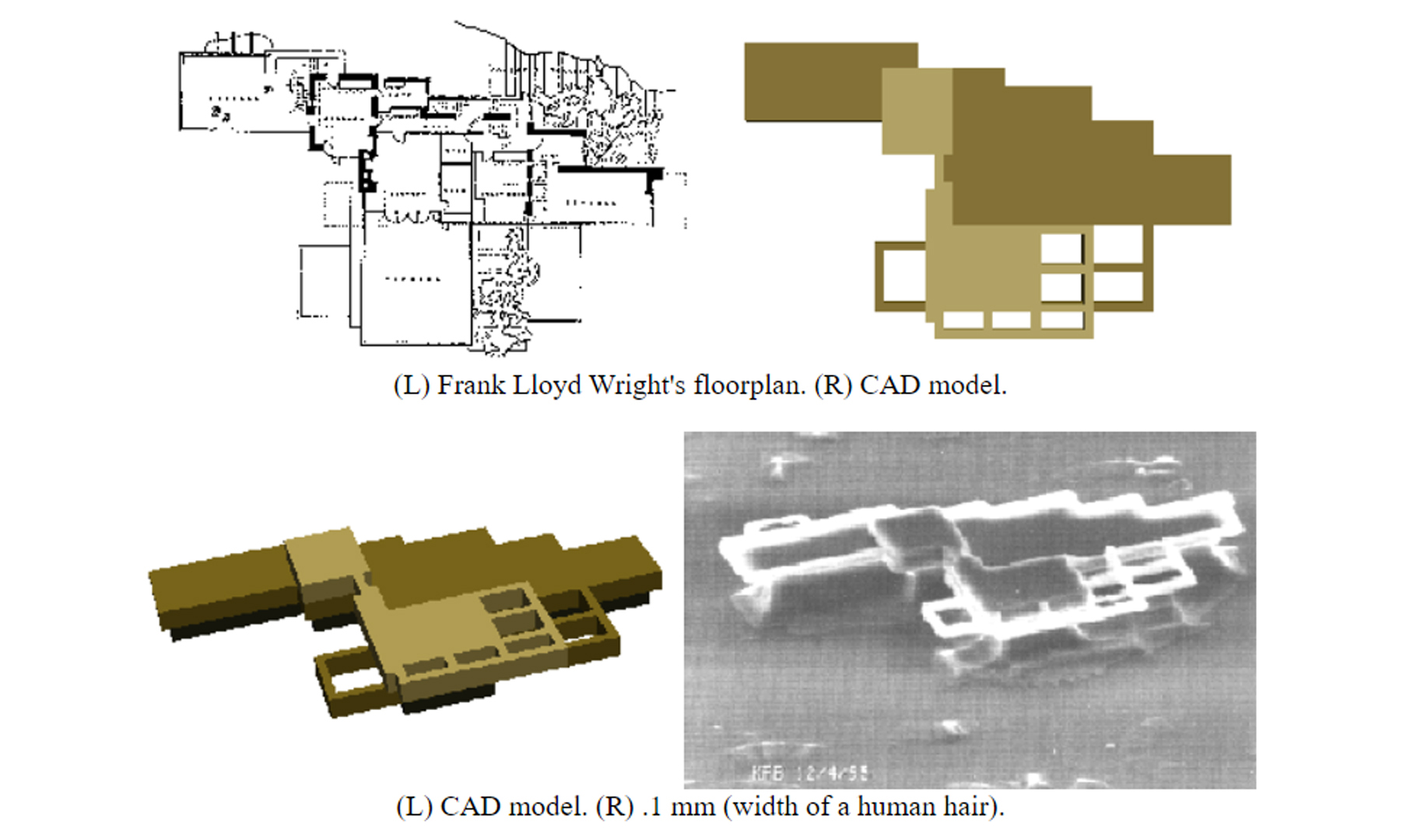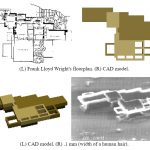Karl Bohringer, Ken Goldberg: The Invisible Cantilever
Title:
Artist(s) and People Involved:
Exhibiting Artist(s):
Symposium:
Artist Statement:
“Although the senses occasionally mislead us respecting minute objects, such as are so far removed from us as to be beyond the reach of close observation, there are yet many other of their informations, the truth of which it is manifestly impossible to doubt; as for example, that I am in this place, seated by the fire, clothed in a winter dressing gown, and that I hold in my hands this piece of paper…” —Descartes, Meditations
A 1/1 millionth scale version of Frank Lloyd Wright’s Fallingwater, invisible to the naked eye. This project considers the distance between the viewer and what is being viewed. How does technology alter our perceptions of distance, scale, and structure? Technologies for viewing continue to evolve, from the camera obscura to the telescope to the atomic force microscope; each new technology raises questions about what is real versus what is an artifact of the viewing process. For example, how does the framed vision of the microscope differ from the framing induced by the World Wide Web? Discontinuities induced by these media can undermine what Husserl calls the “inner” and “outer” horizons of experience. These horizons are vital to architecture and to what we might call “telepistemology”: the study of how distance influences belief, truth, and perception. Why Fallingwater? In 1991, a poll of architects taken by Architectural Record found Frank Lloyd Wright’s Fallingwater (1936) to be the single most important building of the last 100 years. To reflect features on the site, Wright employed the cantilever: “a horizontal structure for distributing force, the true earth-line of human life” (Wright). Cantilevers are also used to measure forces in Micro Electro Mechanical Systems (MEMS): miniature devices etched from silicon. Examples of current research can be found at many labs including UC Berkeley, Cornell, and UCLA. For example, many automotive air bags measure the deflection of a MEMS cantilever to detect collisions.









